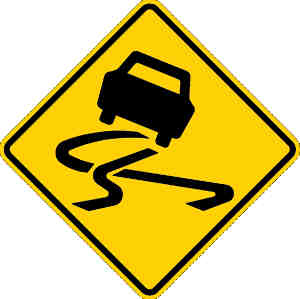What Is No-Fault Insurance?

Drivers in at-fault states must carry a minimum amount of liability insurance to be considered a legal driver. If you live in a no-fault state, you need to carry no-fault insurance instead of liability coverage. No-fault insurance requires each driver to file their own claim with their insurer after an accident. In addition, drivers can only sue the responsible party for injuries or suffering if certain stipulations are met. Read on to learn what no-fault insurance means and if you live in a no-fault state.
What Is a No-Fault State?
If you’re in an accident in a no-fault state, your insurance will cover your personal injuries instead of the other driver’s. Basically, regardless of who is responsible for the accident, both parties are required to make a claim through their own insurance. However, you can still be found at fault for an accident in a no-fault state and be held responsible for any damaged property.
If you live in a no-fault state, your ability to sue the other parties for personal injuries is limited. Drivers are only allowed to sue if their injuries meet certain threshold conditions and are seen as severe in the context of the accident.
What Does No-Fault Insurance Cover?
If you live in a no-fault state, you must make a claim through your own insurance provider regardless of who is at fault for the accident. As a result, drivers in no-fault states are required to carry personal injury protection coverage to cover their own injuries in the event of an accident. Property damage is still covered by the responsible party’s insurance.
The purpose of no-fault insurance is to lower car insurance costs and take small claims out of court by having each insurer reimburse their own customers for personal injuries.
No Fault vs. Liability Insurance
No-fault insurance is different than at-fault, or liability insurance. With at-fault insurance, the at-fault party’s insurance reimburses the other driver for both personal injury and property damage. You can make a claim through the other driver’s insurance to pay for your medical bills, repair costs, injuries, etc.
Claims usually take longer to process in at-fault states than no-fault states. Insurers need more time to look over the details of the accident and determine who is at fault before deciding which insurance company is responsible for covering the expenses.
Which States Have No-Fault Insurance Laws?
The following states have no-fault insurance laws:
Florida
Hawaii
Kansas
Kentucky
Massachusetts
Michigan
Minnesota
New Jersey
New York
North Dakota
Pennsylvania
Utah
Drivers in Kentucky, New Jersey, and Pennsylvania can choose between traditional liability insurance or no-fault insurance. You’re usually given the option when you sign up for your insurance policy. Visit our state list to learn more about your local insurance laws.
If you’re looking for a quality liability or no-fault insurance, you’ve come to the right place! For over 60 years, The General has offered affordable rates, prime customer service, flexible payment options and more to our customers. In addition, our high-risk drivers get the same benefits as our standard drivers. You can get a free insurance quote in under two minutes or read more insurance 101 articles on our blog.




